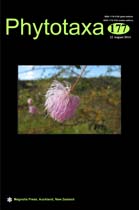Abstract
Our molecular phylogeographic analyses based on the nrDNA ITS and cpDNA trnLF of Sedum tosaense populations in the Shikoku District, Japan and Jeju Island, Korea suggested a disjunct distribution. Plants of S. tosaense from the two regions comprised a well-supported clade consisted of plants from Kochi (Shikoku District) and those from Jeju Island; we estimated a divergence time of 0.61 Ma between the Kochi and Jeju populations based on the ITS and partial trnLF. We conclude that: 1) S. tosaense has a disjunct distribution between Kochi and Jeju Island, and 2) plants of this species might have dispersed between Kochi and Jeju Island over water, but not via a land bridge, which flooded before subclade divergence.

